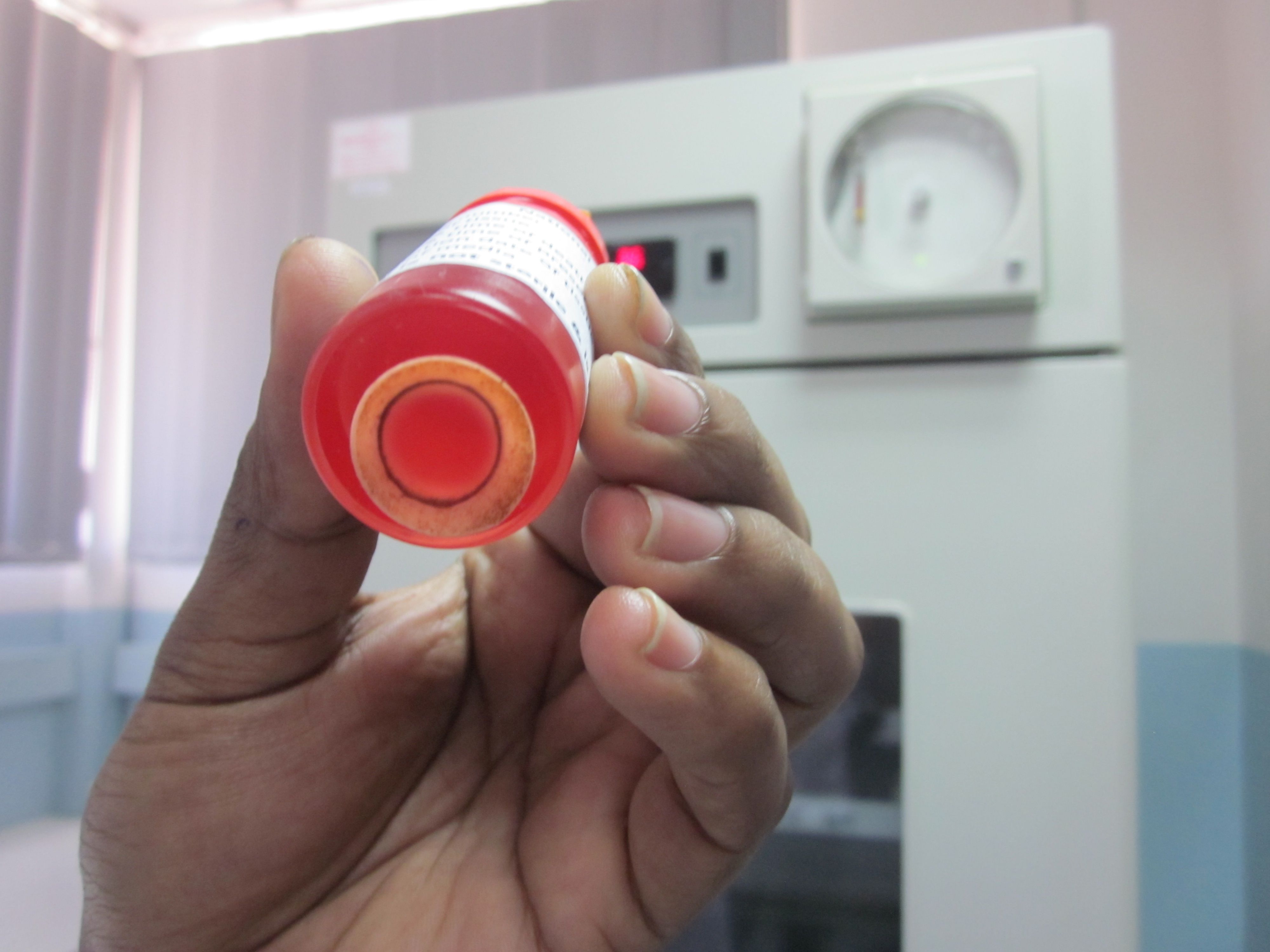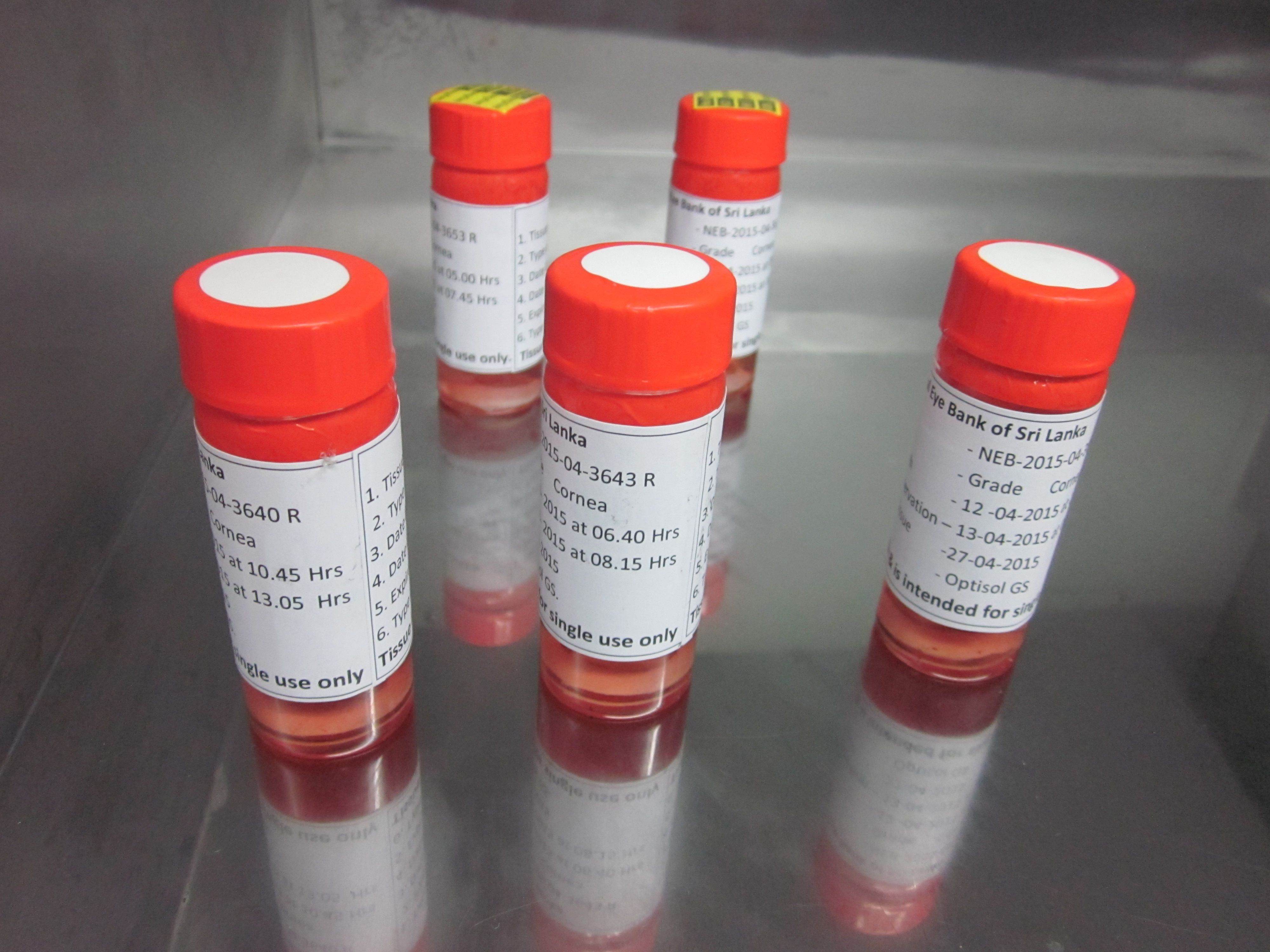Objective:
Students will be able to evaluate the advantages and disadvantages of using print and video to inform an audience about organ donations. Students will also be able to provide an objective summary of the text distinct of all personal opinions.
Warm-up:
Break up into groups of three or four students and discuss the following questions:
Would you donate an organ or tissue after death? Which organs or tissues would you feel comfortable donating and which would you not feel comfortable donating?
Be prepared to share your answers with the rest of the class.
Introducing the Lesson:
- Today's lesson explores the topic of cornea donations. The cornea is the clear part of the eye that protects the iris, pupil and anterior chamber. Did you know that 5 percent of all Sri Lankans donate their corneas after death complared to about 1.6 percent of Americans?
- Journalist and Pulitzer Center grantee Ross Velton traveled to Sri Lanka to look at the country's eye donating phenomenon. Sri Lankans donated enough corneas to satisfy the country's needs, so now Sri Lanka is exporting corneas to places like Japan, China and Pakistan. The following article and two videos explain why Sri Lankans are inclined to donate their corneas. By the end of this lesson, you will determine which medium-- text or video-- you think best describes the topic and would be most appropriate for you to use when explaining the topic to your community in a presentation.
Analyzing Resource 1: "Sri Lanka: Good Karma in Dead Parts"
Watch the video in the resource "Sri Lanka: Good Karma in Dead Parts." Answer the following questions and those attached in the questions section.
Analysis: If your goal is to explain the importance of organ and tissue donations to your community, how effective would this video be in helping you with your goal?
- What are the advantages and disadvantages of using this video?
- Does the video do a good job explaining body part donations?
- Are there aspects of the video your community would connect with? Are there aspects of the video your community wouldn't connect with?
Analysis of Resource 2: "Sri Lanka: The Country that Supplies Eyes"
- Read the article in the resource "Sri Lanka: The Country that Supplies Eyes." Answer the following questions attached in the question section.
Analysis: If your goal is to explain the importance of organ and tissue donations to your community, how effective would this video be in helping you with your goal?
- What are the advantages and disadvantages of using this article?
- Does the article do a good job explaining body part donations?
- Are there aspects of the article your community would connect with? Are there aspects of the article your community wouldn't connect with?
Analysis of Resource 3: "Meet the Journalist: Ross Velton"
- Watch the video in the resource "Meet the Journalist: Ross Velton." Answer the following questions attached in the question section.
Analysis: If your goal is to explain the importance of organ and tissue donations to your community, how effective would this video be in helping you with your goal?
- What are the advantages and disadvantages of using this video?
- Does the video do a good job explaining body part donations?
- Are there aspects of the video your community would connect with? Are there aspects of the video your community wouldn't connect with?
Conclusion:
1. Imagine somebody you know needed an organ or tissue donation. Of the resources provided (article/video/photo), which do you think would be most effective in helping you convince your community to pledge a donation of their organ or tissue to the person you know?
2. Design and write an outline for a five-minute presentation you will give to your community explaining the benefits of organ and tissue donations. Make sure your presentation does the following:
- Gives detailed and legitimate reasons explaining the benefits of organ donations
- Connects the issue directly to your community
- Uses at least one Pulitzer Center resource
This lesson plan for global awareness asks students to evaluate the advantages and disadvantages of using print and video to inform an audience about organ and tissue donations. Students will also be asked to provide an objective summary of the text they read.
CCSS.ELA-LITERACY.RI.6.2
Determine a central idea of a text and how it is conveyed through particular details; provide a summary of the text distinct from personal opinions or judgments.
CCSS.ELA-LITERACY.RI.6.7
Integrate information presented in different media or formats (e.g., visually, quantitatively) as well as in words to develop a coherent understanding of a topic or issue.





